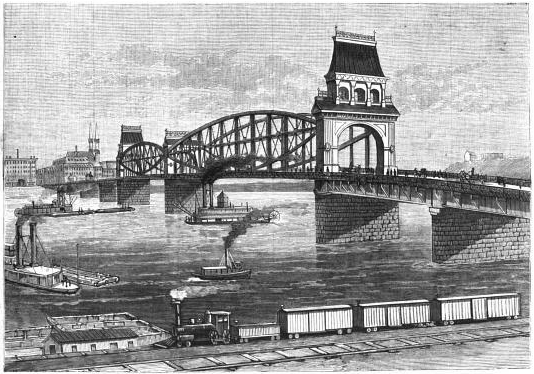
A view under the railroad bridge, which covers the entire length of Thirty-Third Street.

Taken from the same vantage point as our previous pictures of the Smithfield Street Bridge, but a little later in the day.

The Sixteenth Street Bridge, built in 1922, is now officially named for David McCullough, the historian. It is a splendidly ornate bridge, and Father Pitt thinks (he welcomes corrections) that it is the only one of Pittsburgh’s major bridges to be named for someone still living. Mr. McCullough certainly deserves the honor if anyone does.
This picture is made available under the Creative Commons CC0 1.0 Universal Public Domain Dedication, so no permission is needed to use it for any purpose whatsoever.

“Pennsylvania.—New Steel Bridge Recently Erected Over the Monongahela River at Pittsburgh.” From Frank Leslie’s Illustrated Newspaper, August 11, 1883. Note that the bridge is half today’s width; the upstream half was added later.
The Sixth Street or Roberto Clemente bridge, one of the famous Three Sisters, seen from the North Side.